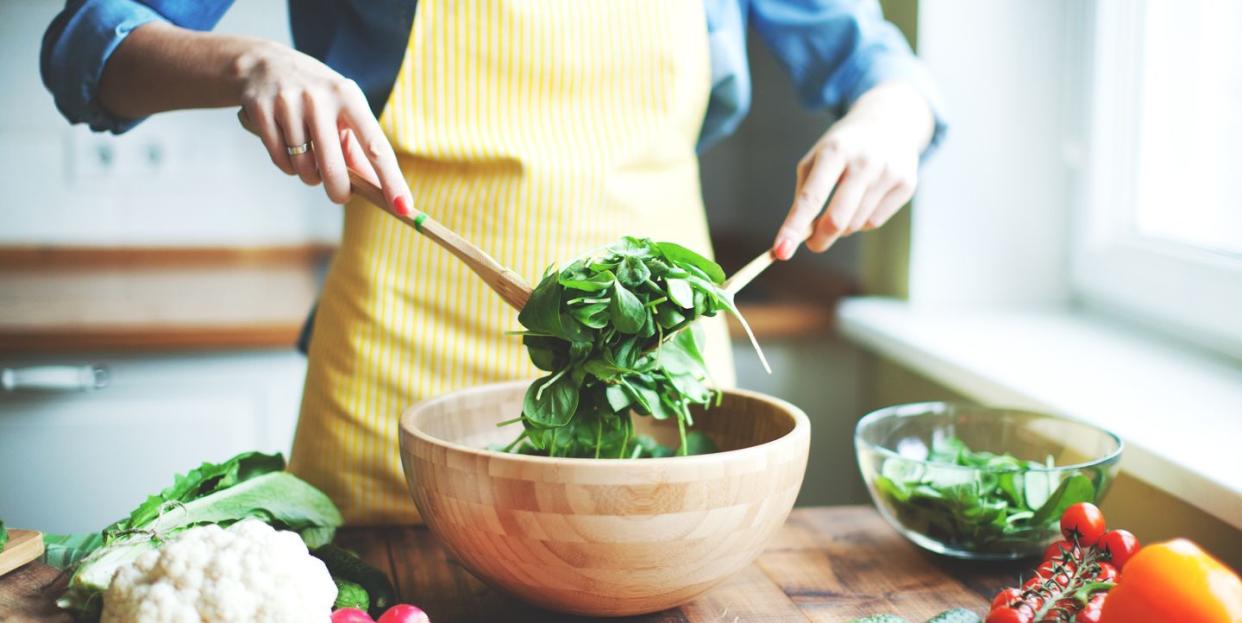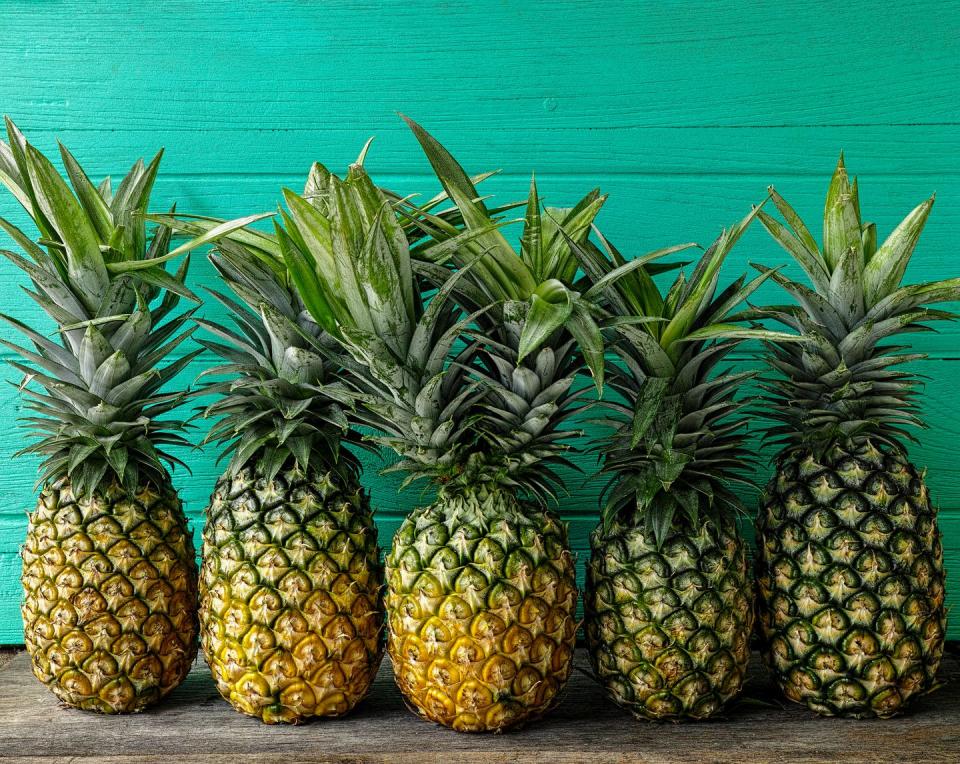This Is What a Nutritionist Really Thinks of the New "Dirty Dozen"

The Environmental Working Group released its annual "Dirty Dozen" list today.
The list includes the top twelve veggies and fruits found to have the highest amount of pesticide residue, including strawberries, spinach, and kale.
The residue found was still below safety guidelines, and the health benefits of eating produce outweigh the risks.
Every year, the Environmental Working Group (EWG) publishes a list of the "Dirty Dozen," or the fruits and vegetables the nonprofit claims have the highest amount of pesticides when grown conventionally versus organically.
The EWG has compiled the list annually since 2004 based on internal data that's not peer-reviewed. Using 40,900 samples for 47 different types of produce, the EWG found these twelve had the most pesticide residue:
The 2019 Dirty Dozen Foods List
Strawberries
Spinach
Kale
Nectarines
Apples
Grapes
Peaches
Cherries
Pears
Tomatoes
Celery
Potatoes
Strawberries rank number one for the fourth year in a row, and the rest of the list looks similar to years past with one exception: Kale made the top 12 for the first time in a decade.
As a Registered Dietitian (R.D.), my philosophy on veggies and fruit of all types is that they’re a little gift from nature to us. In fact, I often say (and write!) that more is more when it comes to how often you should eat them. That’s because countless peer-reviewed studies have linked these powerhouses with benefits for health, weight management, and long-term chronic disease risk.
And while the EWG ultimately agrees with that statement, I always get a little bit nervous when the list is published each year, simply because it often appears without context. There’s no validated method for determining our actual exposure to pesticides through veggies and fruit. The list doesn't account for washing and peeling, or how much you actually consume.
For example, kale reappearing on the list will likely make headlines, despite the lack of data on whether or not eating high amounts of kale can actually harm to you. Most research suggests the exact opposite, in fact. Kale is linked to reducing your risk of chronic disease and vision loss, lowering blood pressure, and improving bone health, FWIW.
The other thing missing from the discussion surrounding the Dirty Dozen is that organic pesticides may come with similar concerns (yes, organic farms use third-party validated pesticides!). We still can’t say with certainty that organic produce provides any more or less risks than conventionally grown ones.
IMO: The biggest problem is that 50% of Americans don’t eat enough fiber, nor do we consume recommended amounts of potassium, calcium, magnesium, minerals that are found in - you guessed it - vegetables and fruit. What’s worse? Less than 10% of us are actually meeting our needs for recommended servings of vegetables and fruit.
When we demonize a specific food (or 12 foods) that, on the whole, is beneficial for health, we’re laying the groundwork for avoiding veggies and fruit - a trend that's taken off with diets like keto. So regardless of whether or not you buy organic produce, here are two things we should all know about produce:
Consider eating more. Period. Simply choose more veggies and fruit at meals or snacks and you’re already on the right track to better health. They displace other, more processed food on your plate that may not be as nutritious.
Think about whole foods vs. fresh foods: Whole describes the best form in which to eat fiber-filled fruit and veggies: fruit instead of fruit juice, vegetables instead of veggie chips, baked potatoes instead of fried ones … you get the point. It'll help you cut back on saturated fat, sodium, and added sugar. This can include frozen and canned produce, so fresh isn't the only way to go.
The 2019 Clean Fifteen Foods List

If you're concerned about pesticides, the EWG also publishes a list of the "Clean 15," a.k.a. the produce from conventional growers that generally had less residue in the group's tests. This year they are:
Avocados
Sweet corn
Pineapples
Frozen sweet peas
Onions
Papayas
Eggplants
Asparagus
Kiwis
Cabbages
Cauliflower
Cantaloupes
Broccoli
Mushrooms
Honeydew melons
The Bottom Line
Ultimately, even the EWG states that we should all eat more produce and the benefits outweigh the risks when it comes to fruits and vegetables Since this is one of the very few hard-and-fast rules in nutrition science to-date, that’s a recommendation we can all get behind!
('You Might Also Like',)

